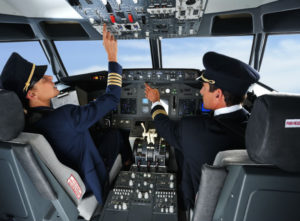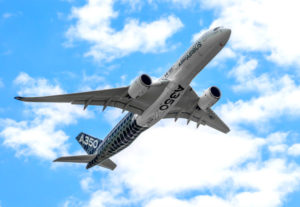In recent years, flying has evolved with unprecedented safety standards. Captain Lim Khoy Hing explains how.

Image: Travel 3Sixty
According to a recent news article (2017 Safest Year on Record for Commercial Passenger Air Travel: Groups, Reuters), 2017 was the best year on record for safe commercial aviation. Though today, technological advances in aviation play a key role in ensuring passenger safety, it is the human factor that ultimately makes the difference.
The Human Touch
Efforts are constantly made by training teams to reduce unwanted incidents by improving the technical knowledge and skills of pilots. Most airlines appreciate the importance of good pilots, which is the reason why so much effort goes into the selection process of pilots.
While a few airlines like AirAsia prefer to groom and develop some of its own pilots from scratch, others expect prospective pilots to have accrued significant flying experience on their own time before they apply to become commercial pilots.

Image: Travel 3Sixty
Rise of Automation
When I first started flying, there was hardly any automation on airplanes. I had to manually fly the aircraft to the best of my ability. For pilots of my generation, our piloting skills played a big part in how well we flew, especially in maintaining the correct heights and speeds, and handling emergencies.
Later on, the autopilot and auto thrust systems were introduced to manoeuvre aircraft. This was a great relief as these functions reduced a pilot’s manual workload considerably, allowing us to concentrate on more important aspects of managing the aircraft safely during flight.

Image: Travel 3Sixty
Airbus A380
Advanced Features
Technological advancements have allowed for newer aircraft to be designed with enhanced safety features and redundancies (backups) than ever before. For example, previously, to avoid a mid-air mishap, pilots were trained on how to manually avoid conflicting traffic. While pilots are still rigorously tested on this, today’s airplanes like the Airbus A380 are one step ahead of the game. Avoidance is no longer solely dependent on the pilot’s skills. Instead, it is carried out automatically by the aircraft in a safe manner.
On the Airbus A350, the auto brake system has the added ability to warn and prevent the pilot from overrunning a runway. It also has the capability of knowing when to slow down in order to turn exactly at the correct exit, especially in poor visibility, for instance in foggy conditions.
Additionally, all commercial planes are equipped with a ground proximity warning system (GPWS) to alert pilots if their aircraft is at immediate risk of flying into the ground or any obstacles.
There is now an even more advanced system known as EGPWS, which uses GPS (global positioning system). It is more sensitive to surrounding mountainous terrains, and helps keep the plane on a safe path.
Similarly, on the Boeing 787, engineers have designed features to provide backup in the unlikely event that there is a failure of an onboard system. Boeing designs include multiple levels of redundancy, so that no single failure can lead to an untoward incident. Also, GPS, advanced displays and telecommunication have enabled a level of flight precision that was impossible in earlier days of air travel.
While Boeing’s flying philosophy ensures that pilots are always in command and can override the automatic flight controls, Airbus prefers more automation on the aircraft to enhance flight safety.

Image: Travel 3Sixty
Boeing 787
e-Encyclopedia
Before the introduction of the electronic flight bag (EFB), the pilot’s bag was loaded with bulky hard copies of flight manuals. The EFB, which is almost similar to a normal iPad, has resolved this. It’s just like an encyclopedia containing a number of flight manuals, charts and airport approaches for quick and easy reference.
These EFB incorporate a moving map, and have the capability to show an aircraft’s exact position, and movements on the surface of the airport. This greatly improves safety when manoeuvring in poor visibility.
Record Safety
New technology has certainly made flying much safer than before, and I hope this information helps allay any doubts you might have on flight safety.
Did you know that flying is statistically safer than any other form of transportation? As mentioned at the opening of this article, 2017 was the safest year on record.
With that, I wish you safe flying always!
Posted: 21.03.18